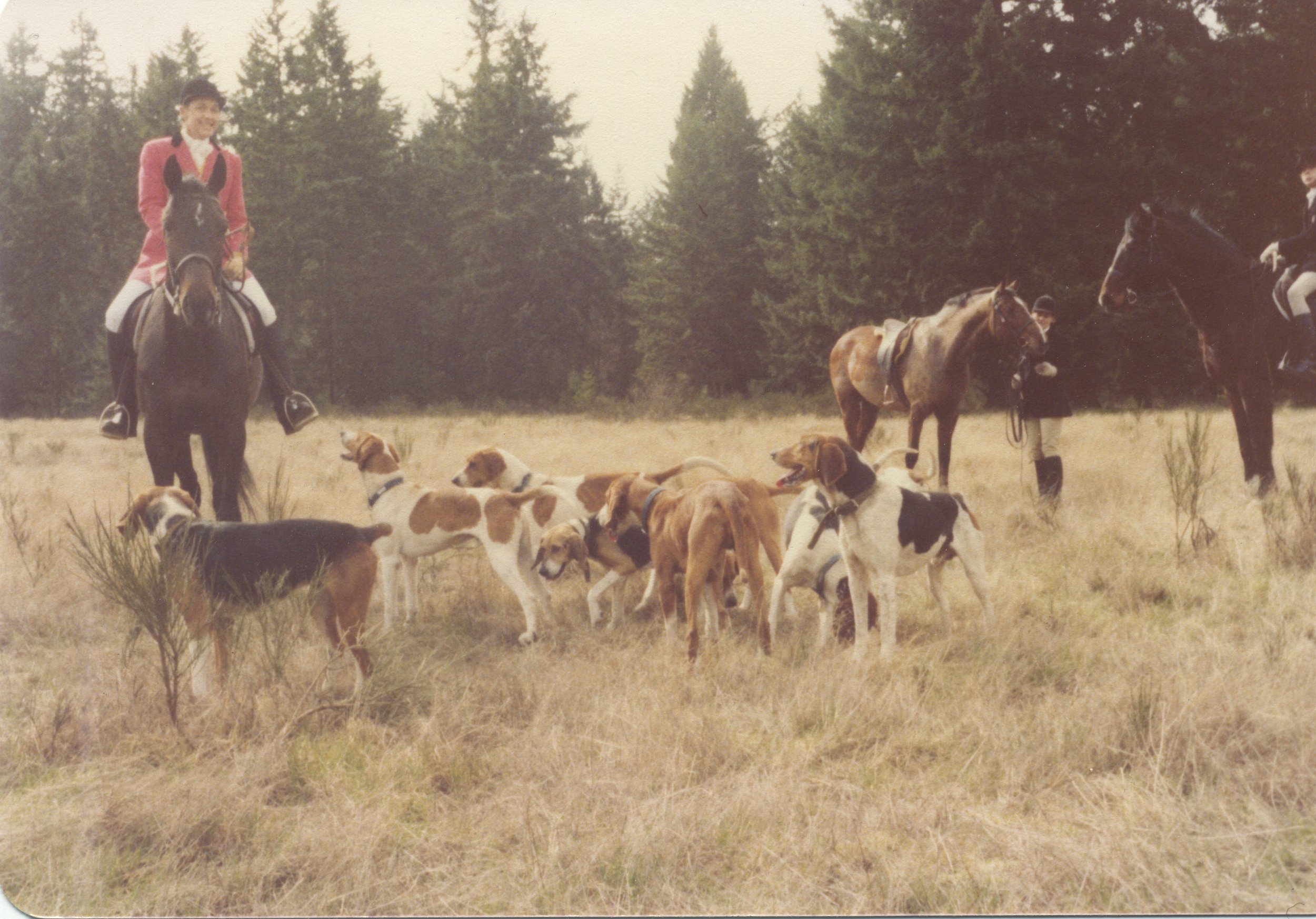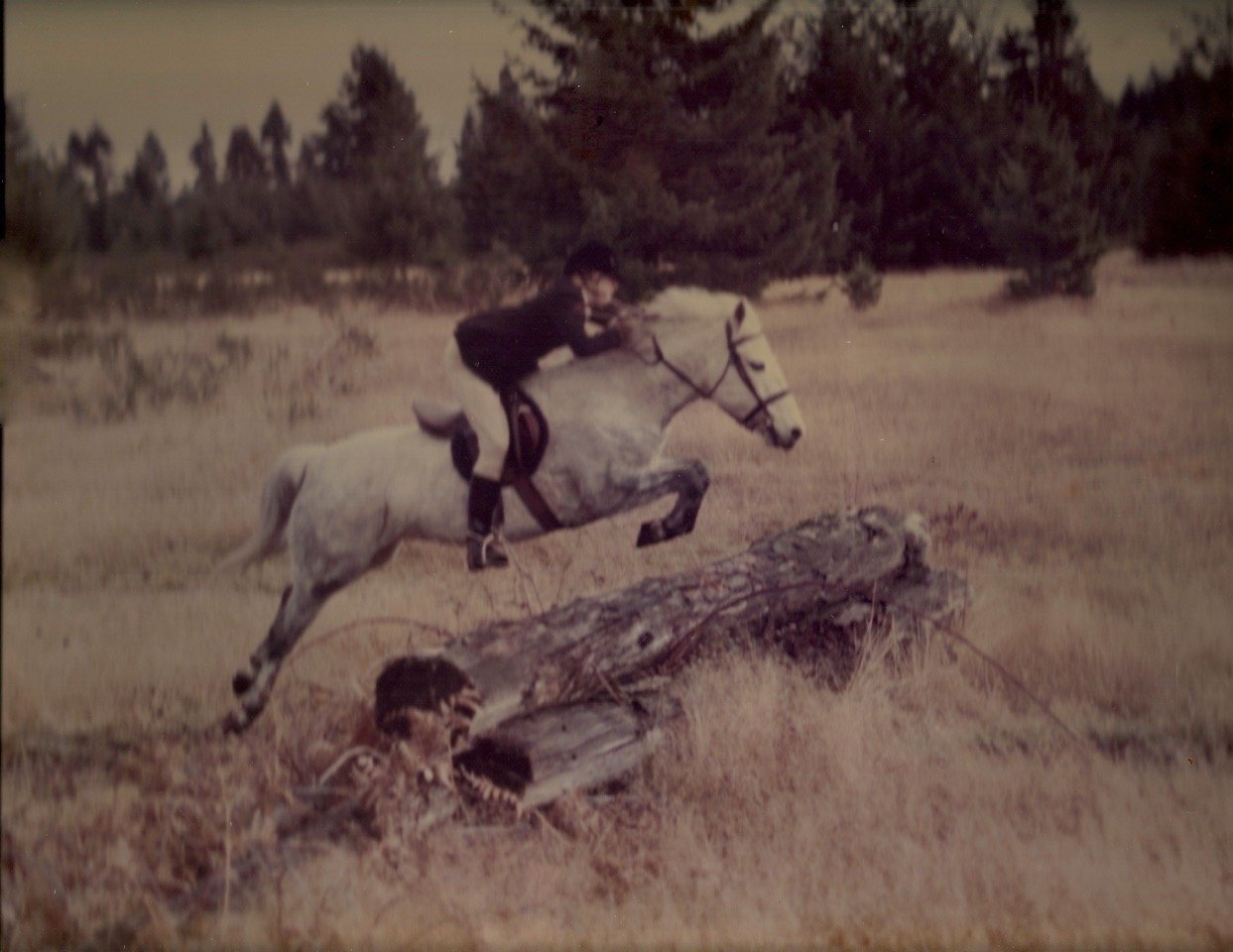My mother, a farm horseman,, and her brothers, Naesgaard, Denmark, 1942
EARLY YEARS WITH HORSES
Horses have long been part my family. My mother was a horsewoman, having grown up on a farm worked by horses in Denmark. As a young child I began with horses alongside my mother and two sisters, ranging on horseback over a vast wild territory, the last remaining native prairie in the Pacific Northwest, the Fort Lewis Reservation. The land seemed made for horses and exploration.
My sisters and I began hanging around Woodbrook Stables, cleaning stalls and working our way through the riding levels. My mother was given a poorly started thoroughbred mare, Tsunami, and eventually found Stardust, a Welsh-Connemara pony. Stardust was wonderfully good natured, a natural jumper, and an incredible teacher.
Drawn by the wild land and the chance to explore the reservation further my mother, sisters, and I began riding out with the Woodbrook Hunt. The fox was a scent-soaked burlap sack dragged by horseback; there was no hunting or killing involved.
The hunts were testing. Falls and runaways were common. I learned what it was like to have a horse take a bit in his teeth and run. Though there were never any fatalities there were serious injuries and close calls.
At age nine my twin sister and I joined the staff of the hunt as whippers-in, assisting the Master of Foxhounds (MFH) with the hounds. On many a bitter Pacific Northwest morning, with rain and sleet pelting down, we would saddle our horses under the shelter, mount up, steel ourselves against the weather, and head out with the hounds for a long day. Over nine years serving as whippers-in my sister and I learned to pay attention, ride well, and work together with our horses.
My mother, on Kris, and twin sister on Stardust
In addition to training and exercising the hounds by horseback, all other days my sister and I could be found working with our own and others’ horses, practicing for the yearly Hunter Trails, learning polo with the Tacoma Polo Club, and exploring the reservation.
My mother, MFH, on Dezi and twin sister on Kris, resting with the hounds after a run. 1976
In this first intensive decade of my life with horses I observed a lot of good and a lot of hard things, all of which led me toward a deeper inquiry into the nature of horses and horsemanship. Over these years the question I continually asked my horse was: “How can I become the partner you would willingly choose?”. In listening for the response I learned to observe, feel, and think always of the horse.
Along with the horses during these early years I gathered a good deal from a few knowledgeable horsemen/women, and especially from my twin sister, who had a natural feel and understanding of horses and helped me begin to trust my own.
My approach with horses was also greatly influenced by my time working on a remote farm in British Columbia, and beginning to study yoga. After going afield to university to study ecology and philosophy, I returned to this farm; it was there in the early 1990’s that I met the yearling colt who would become my greatest teacher and who would illuminate my path forward with horses.
With Stardust. 1975




